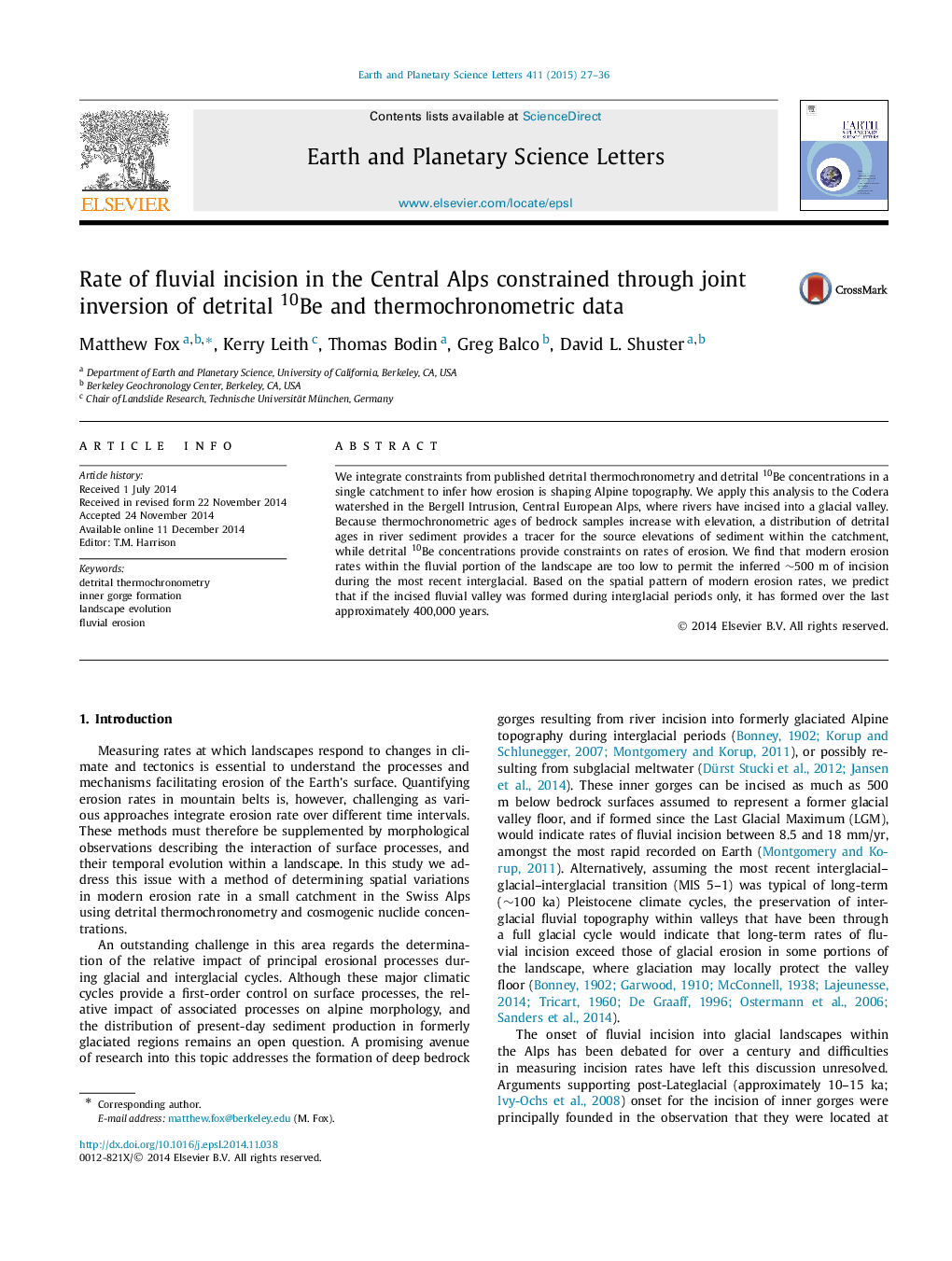| Article ID | Journal | Published Year | Pages | File Type |
|---|---|---|---|---|
| 6428404 | Earth and Planetary Science Letters | 2015 | 10 Pages |
â¢We present an approach to interpret detrital 10Be and thermochronometric ages.â¢Modern erosion is focused in fluvial portion of the landscape.â¢Fluvial valley likely took longer than one glacial-interglacial cycle to form.
We integrate constraints from published detrital thermochronometry and detrital 10Be concentrations in a single catchment to infer how erosion is shaping Alpine topography. We apply this analysis to the Codera watershed in the Bergell Intrusion, Central European Alps, where rivers have incised into a glacial valley. Because thermochronometric ages of bedrock samples increase with elevation, a distribution of detrital ages in river sediment provides a tracer for the source elevations of sediment within the catchment, while detrital 10Be concentrations provide constraints on rates of erosion. We find that modern erosion rates within the fluvial portion of the landscape are too low to permit the inferred â¼500 m of incision during the most recent interglacial. Based on the spatial pattern of modern erosion rates, we predict that if the incised fluvial valley was formed during interglacial periods only, it has formed over the last approximately 400,000 years.
